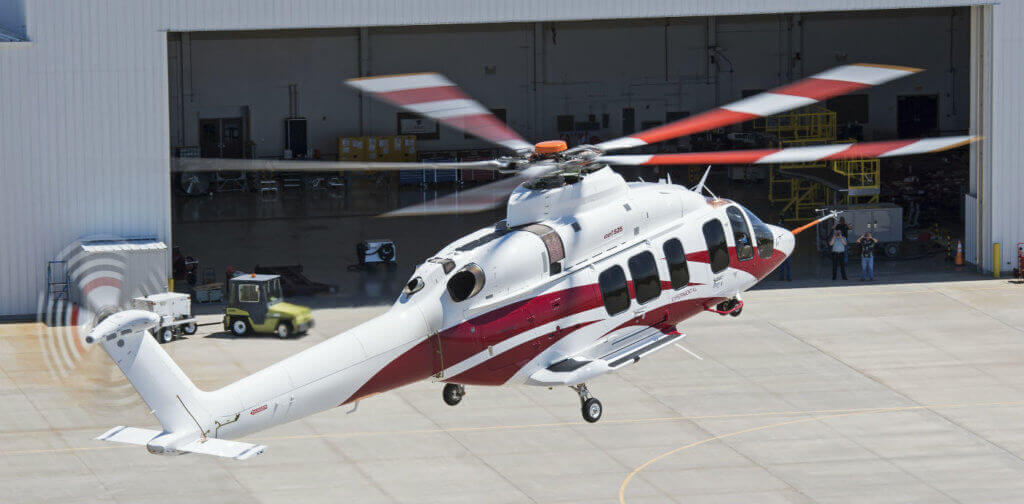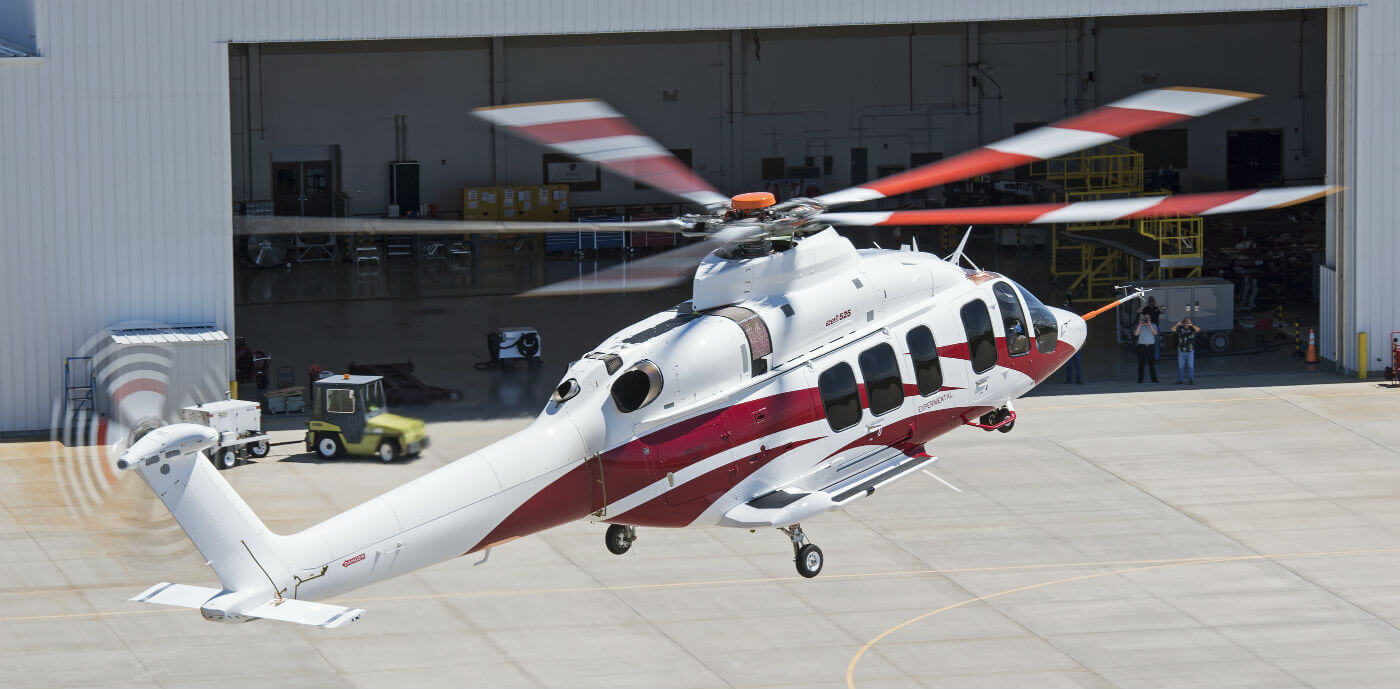The Bell 525 Relentless is set to begin cold weather flight tests in Yellowknife, Northwest Territories, early next year, as the manufacturer targets certification of its fly-by-wire super medium helicopter by the end of 2019.

Susan Griffin – executive vice president of commercial business at Bell – reported “significant progress” on the aircraft’s flight test activities in 2018, including the completion of hot and high tests.
Four aircraft are now involved in the flight test program, which has recorded almost 900 flight hours. Three aircraft are performing flight tests from Bell’s newly-expanded Flight Research Center (formerly known as Xworx) in Arlington, Texas, with the fourth recently finishing production and joining the effort in ground-related certification testing at the purpose-built 525 manufacturing facility in Amarillo, Texas.
Two aircraft (ships two and three) will head to Canada for the cold-weather trials in the new year, which are expected to last several months. A third aircraft (ship four) will head to New York state for snow testing, and the fourth (ship five) is expected to begin flight tests around the same time.
The Federal Aviation Administration (FAA) has joined the test program, which will now focus on the remaining flight and component fatigue tests. After certification in oil-and-gas configuration, the team will immediately switch focus to certify the aircraft in search-and-rescue configuration, as well as certify a full ice protection system. Certification of the type from the European Aviation Safety Agency (EASA) is expected six to nine months after FAA approval.
The 525 program suffered a major setback in July 2016 when the first prototype crashed during flight testing, killing both test pilots on board. In January of this year, the U.S. National Transportation Safety Board (NTSB) issued its final report on the accident, which found that the crash was caused by unanticipated severe vibrations as the aircraft attempted to recover rotor RPM following a one-engine inoperative (OEI) test at 185 knots.
According to Josh O’Neil, flight test manager for the 525, the team has implemented all the corrective actions recommended by both the NTSB report and Bell own’s report into the accident – and has finished a “thorough investigation” of the accident in-flight.
“So [that involves] actually going back and understanding those flight conditions, recreating them in flight, and proving out the aircraft is safe there and everywhere else in the [flight] envelope,” said O’Neil.
Production started on the first serial 525 at Bell’s facility in Amarillo, Texas, in summer 2018, though the manufacturer will not reveal current or future production rates.
Bell claims the aircraft will be the most technologically-advanced helicopter ever to be certified in its category (part 29, 14 Code of Federal Regulations), with its fly-by-wire controls enhancing safety and reducing pilot workload; a “precedent-setting” drive system that meets the latest European Aviation Safety Agency (EASA) standards for run-dry performance (and tested to over an hour); and a technologically advanced, low-switch cockpit. It will certainly be the first commercially-certified fly-by-wire aircraft.
When certified, the super-medium aircraft will be entering a difficult offshore oil-and-gas market that has been enduring some of the most significant headwinds in its history. There, it will compete against the Airbus H175 and Leonardo AW189 – and Bell believes it will also compete against the heavier Sikorsky S-92.
In an oil-and-gas configuration, the 525 can carry 16 passengers in seats that are 20 inches wide. In a high-density seating configuration, it can carry up to 20 passengers.
“I think the oil-and-gas companies and the operators, with the downturn, I think they’ve learned to be more efficient in the way that they’re operating,” said Griffin. “I do see that the 525 has an opportunity in that market. Obviously the S-92 is the predominant heavy aircraft [offshore] right now, but I think bringing a second competitor into that market . . . so that the industry isn’t so reliant on just one . . . I think the safety features that [the 525] brings into those markets – I think it’ll be recognized for that.”
Perhaps because of the current state of the offshore market, Bell is firmly pitching the aircraft at “multiple” markets, with VIP and search-and-rescue the other key sectors for the type.
The manufacturer has not publicly disclosed how many letters of intent or orders it has received for the type, but said it has received “a lot of interest” from those three operating sectors, with potential customers invited to the type’s home at the Flight Research Center to see the aircraft fly.
“Hopefully [early] in the next year we’ll get a marketing license to be able to start allowing people to travel in the aircraft,” said Griffin.
According to Byron Ward, VP of the 525 program, these flights will likely start in the second or third quarter of 2019, with the newly-completed ship five likely to complete the majority of marketing flights.
“It’s interior is already installed and checked out – and it looks very nice,” he said.









